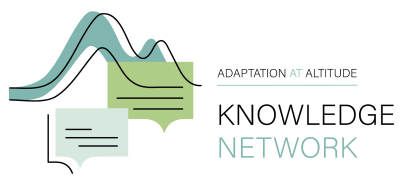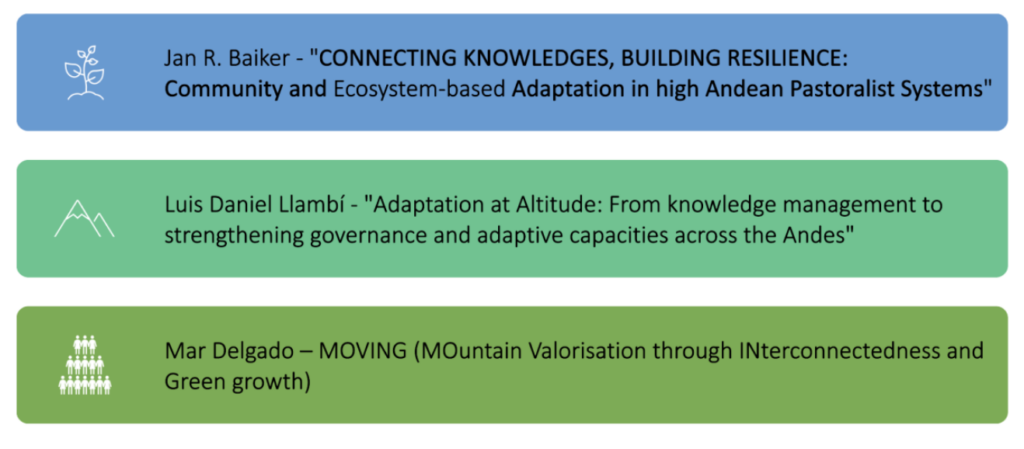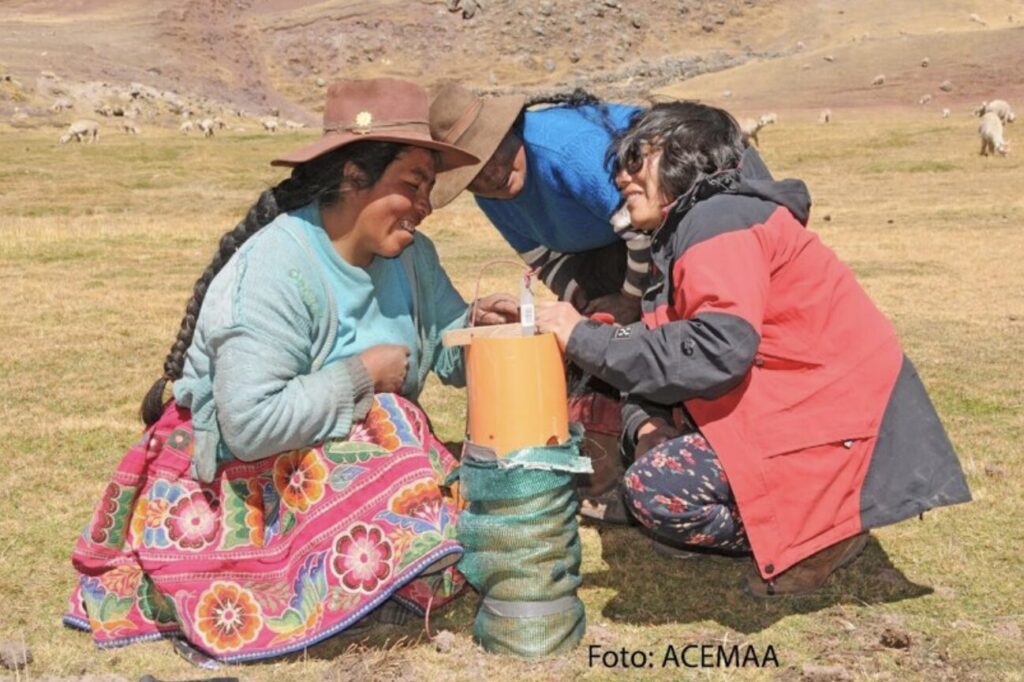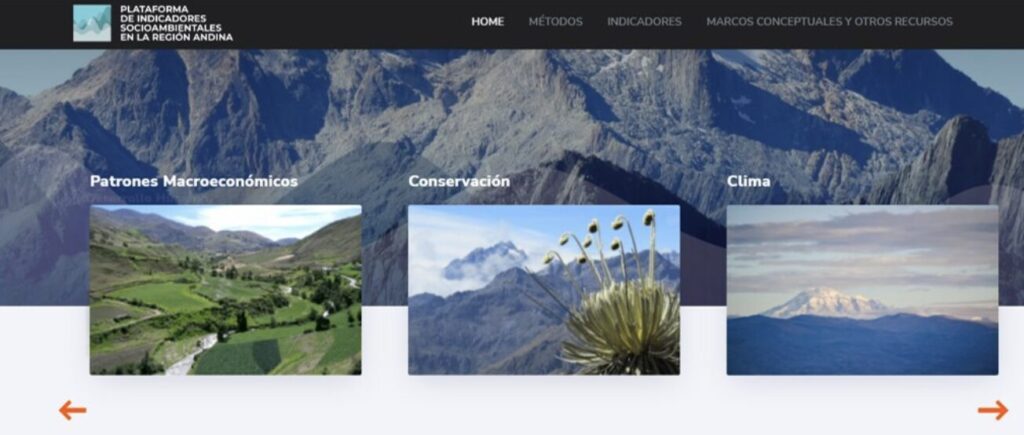A@A Knowledge Network: Meeting #2

Summary
The Adaptation at Altitude (A@A) Knowledge Network held its second meeting on 19th September 2023. The meeting was hosted online by the Stockholm Environment Institute (SEI) under the Adaptation at Altitude programme supported by the Swiss Agency for Development and Cooperation (SDC). The meeting gathered 32 participants all working on or with an interest in mountain environments, climate change, and adaptation.
The A@A Knowledge Network meeting was opened by Rosie Witton and Kate Williamson (SEI), who provided a brief refresher of the A@A programme and the partners involved, and an introduction to the A@A Knowledge Network and its intended aims. Following this, we turned to three members of the A@A Knowledge Network for presentations on their current work advancing climate change adaptation in mountain areas and their planned activities for the remainder of 2023 and 2024. Please find summaries of their presentations below!

To keep up to date with A@A Knowledge Network plans visit our homepage and sign-up to our mailing list!
Community- and ecosystem-based adaptation in high Andean pastoralist systems
Our first speaker was Jan R. Baiker, an environmental scientist and project coordinator at Asociación para la Conservación y Estudio de Montañas Andinas-Amazónicas (ACEMAA) in Peru. Jan presented on ‘Community- and Ecosystem-based Adaptation in high Andean pastoralist systems: The case of the Chillca community (Pitumarca, Canchis, Cusco)’. The Chillca community is made up of 180 families, who have rights over the local territories and management of the ecosystems; the latter largely comprising camelid grazing. Yet, climate change is impacting local vegetation, increasing glacial melt, and reducing groundwater supply. Consequently, leaving the Chillca community to adapt to a new landscape.
The project’s approach is a combination of Community-based Adaptation and Ecosystem-based Adaptation: led by communities and harnessing nature-based solutions. The participative eco-hydrological monitoring system (SMEHP – Sistema de Monitoreo Ecohidrológico Participativo) is made up of 14 eco-hydrological stations, all designed and developed using local feedback and knowledge from the Chillca community. Highlighting the project slogan “Connecting Knowledges, Building Resilience”, Jan emphasised the importance of such an approach in helping to build local responses and agency to the issues they face. This collaborative approach between ACEMAA and the Chillca community is facilitated by their project cycle:
- Knowing the context
- Understanding the problem
- Asking questions
- Defining the design and method
- Design implementation
- Collecting the data
- Analysis and interpretation of data

Contributing to the success of this project, ACEMAA had been working with the Chillca community for over 10 years, allowing them to better understand the community and landscape dynamics and develop trust with community members. Also key to the project’s effectiveness was co-exploring the problems and potential solutions and co-designing the implementation and analysis approach with community members, many of whom spend long hours in the wetlands and grasslands as part of their pastoralist ways of life. As well as increasing learning opportunities for the project team, this better enabled the community to reflect on the project’s results, and also adjust their activities accordingly. Jan also emphasised the importance of feedback and having a continual learning process in place, which can be facilitated through community meetings, committees, and school settings.
The key role of the eco-hydrological stations is to monitor water, soil, and vegetation patterns, but they also act as an early warning system, notifying community members of potential climate risks ahead. For example, in recent months, despite the wet season, results have suggested that aquifers are still incomplete, which may mean the Chillca community faces drought in the upcoming dry season. With such information, the project team works alongside community members to respond with techniques such as water sowing and water harvesting to help better irrigate the land.
To learn more and explore ACEMAA’s current strategies and lines of future work please refer to the slides on the right-hand side or check out ACEMAA’s website.
Adaptation at Altitude: from knowledge management to strengthening governance and adaptive capacities across the Andes
Our second speaker was Luis Daniel Llambí, project coordinator at Consorcio para el Desarollo Sostenible de la Ecoregión Andina (CONDESAN), the organisation leading Adaptation at Altitude efforts in the Andes. Luis Daniel presented on the topic of “Adaptation at Altitude: from knowledge management to strengthening governance and adaptive capacities across the Andes”. The programme seeks to address knowledge gaps on climate change, socio-ecosystem vulnerability, and adaptation solutions; weak governance on climate change adaptation; institutional and financial weaknesses in monitoring the impacts of climate change and the effectiveness of adaptation measures; and the lack of regional spaces to host science-policy dialogues and capacity building efforts.
Focusing on these four key areas, Luis Daniel highlighted the key achievements of the programme so far:
- Over 20 knowledge synthesis products for climate change adaptation. This includes a state-of-the art review of climate change adaptation policies in the Andes; an agenda for integrated monitoring; 18 ecosystem-based adaptation solutions being implemented in rural Andean landscapes, shared on the Adaptation at Altitude Solutions Portal; and a Platform of Socio-Ecological Indicators for the Andes which seeks to systematize key socio-environmental indicators that allow us to characterize patterns of climate change and land use, as well as patterns associated with biodiversity, ecosystem services, socioeconomic dynamics and human well-being at the Andean regional scale.
- Strengthened integrated monitoring across the seven Andean countries and in two long-term monitoring sites.
- Reinforced governance of the Andean Mountain Initiative through over ten international events, supporting participation in decision-making spaces (e.g. COP27), and developing a 5-year action plan (2022-2026) and communication strategy to consolidate the efforts of working groups.
- Enhanced knowledge exchange and capacity building, facilitated by six courses which have gathered over 3000 participants, the development of the Adaptation in the Andes community of practice (in collaboration with UNEP and Practical Action), and the regional dialogues on sustainable mountain development in the Andes.

To close the presentation, Luis Daniel outlined some key lessons to takeaway and consider in mountain adaptation work going forwards:
- A continental perspective is key: despite the 7 Andean countries being home to a diversity of socio-environmental and institutional contexts, challenges, and opportunities, they face shared problems and thus can learn from one another’s successes and failures.
- There is a need for more transdisciplinary, integrated, and participatory approaches for research and monitoring, particularly in the field of climate change adaptation. Luis Daniel highlighted Jan’s example of Cusco, Peru as a great way to involve the community in adaptation initiatives and tackle the remaining challenges in understanding and monitoring the interactions between climate change and land use change and their combined impacts on ecosystem services and human welfare.
- We require more interconnected climate change adaptation policies at local, national and regional levels, and linking to this, more effective dialogues between such scales and the actors leading such efforts. Inter-regional dialogues between global mountain platforms are also necessary to foster cross-learning and develop a common voice for mountains worldwide.
To learn more about the Adaptation at Altitude work going on in the Andes please check out the slides on the right-hand side and the project website.
The MOVING project: Vulnerability and adaptation capacity in 23 European Mountain Regions
Last but not least, we heard from Mar Delgado, coordinator of the MOVING (MOuntain Valorization through INterconnectedness and Green growth) project. MOVING is a Horizon Europe project (2020-2024) made up of 23 expert partners, which seeks to improve the sustainability and resilience of European mountain ranges through the use of value chains.
To understand the impact on value chains, the project analysed the influence of climate change on natural resources and land-use systems for 23 mountain areas across 16 countries. A participatory approach was key in achieving this, with Mar highlighting the role of local stakeholders in collecting and analysing data. Stakeholders were asked about the environmental drivers they believe are affecting the vulnerability of land-use systems in their area, and how this might go on to affect value chains. Workshops were subsequently held to analyse the relative importance of these vulnerability drivers. Furthermore, to better understand existing adaptive capacity to socio-ecological factors, local stakeholders were asked to identify different adaptation mechanisms being implemented in their area.

The most important drivers of vulnerability were climate-related; with rainfall and temperature changes ranked highly by participants. However, the importance of non-climatic factors varied greatly across mountain regions, especially in regards to overexploitation, and land-use and land-cover change. All socio-ecological drivers, and particularly those that are climate-related, were also perceived to have increased in magnitude over the last 20 years. This suggests European mountain regions are facing more intense and/or frequent environmental risks, putting even greater importance on their ability to adapt and build resilience.
The project demonstrated the ways in which adaptation is already occurring in European mountain regions, with a total of 160 adaptation mechanisms identified by participants. Most of the measures were perceived to have high social and environmental feasibility, and moderate technical and economic feasibility; suggesting that technological requirements and economic costs pose as greater barriers to their scaling up and implementation. Mar also highlighted that very few adaptation mechanisms were identified as being able to fully reduce the vulnerability of drivers of change in isolation. Instead, emphasising the need for a well-balanced combination of adaptation mechanisms.
To learn more about the MOVING project’s plans for its final year please refer to the slides on the right-hand side and the project website.
What Next?
To keep informed about upcoming meetings and events, please refer to our A@A Knowledge Network homepage.

(0) Comments
There is no content